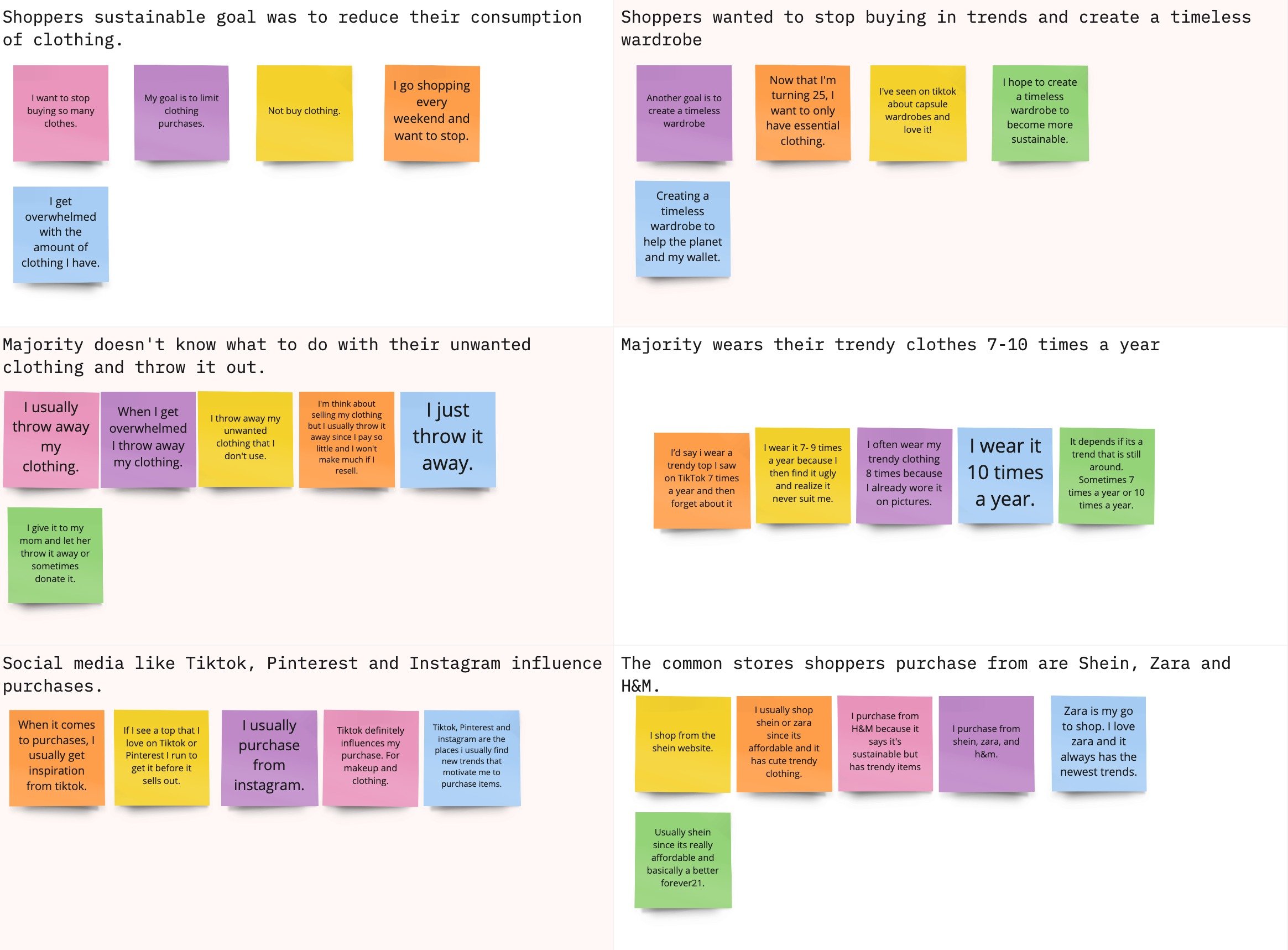Overview:
In my Writing for Engineers class at City College of New York, I tackled the pressing issue of fast fashion and its adverse environmental impacts, particularly its contribution to climate change. As part of this project, I developed an app called Redesign, standing for “The Redesign of Fast Fashion.”
The goal of the app is to educate and inspire women to adopt sustainable shopping habits, empowering them to make environmentally conscious choices.
-
Miror, Figma, Canva, and Google Workspace
-
UX Designer
Engineering Students
-
Product Designer
Problem Statement:
Fast fashion has significant and harmful effects on the environment, posing a major challenge in the fight against climate change. Three key issues highlight the scale of this problem:
Synthetic Fabric Production: The production of synthetic fabrics, such as polyester, relies heavily on fossil fuels. This process not only consumes a substantial amount of energy but also releases large quantities of greenhouse gases. Additionally, these fabrics contribute to microplastic pollution, contaminating water sources and marine life.
Throwing Away Clothing: The fast fashion model encourages frequent purchases and quick disposal of clothing. As a result, vast amounts of textile waste end up in landfills. This waste decomposes slowly, releasing methane, a potent greenhouse gas, and toxic chemicals into the soil and groundwater.
Excessive Clothing Consumption: The relentless cycle of new fashion trends drives excessive consumption. This leads to overproduction, which in turn strains natural resources, including water, energy, and raw materials. The environmental cost of this overconsumption is immense, worsening climate change and depleting essential resources.
Solution:
The Redesign app offers a comprehensive solution to the environmental impacts of fast fashion. It targets key issues like synthetic fabric production and clothing disposal practices. Through research-driven features, the app educates users on sustainable shopping, encourages mindful consumption, and helps reduce the negative effects of fast fashion. This approach not only promotes eco-friendly practices but also aligns with the mission to inspire and empower individuals towards more sustainable choices.
The Process:
Researched key contributors to fast fashion pollution. Conducted interviews with women aged 18-28 to gather insights into their shopping habits and concerns. Created user personas based on interview data. Analyzed existing competitors in the app market. Developed low-fidelity prototypes and conducted user testing. Refined and designed high-fidelity prototypes based on feedback.
Interviews & Surveys: Understanding Potential Users
To better understand the needs of our target audience, I focused on women aged 18-28, a demographic that significantly engages with fashion and is highly affected by fast fashion trends. Research indicates that women’s fashion makes up a larger market compared to men’s. Making this group crucial for understanding shopping behaviors and attitudes towards sustainability and climate change.
Who I interviewed?
I interviewed women aged 18-28 who are interested in reducing their shopping habits and adopting more sustainable fashion practices.
Initial Interview Questions:
Could you describe your current shopping habits?
What apps or websites do you frequently use for shopping?
What are your personal goals regarding sustainable fashion?
How do you typically handle unwanted clothing?
How often do you buy items from fast fashion brands?
On average, how many times do you wear a trendy item before it becomes unworn?
What factors influence your decision to purchase from fast fashion brands?
Interview Findings:
User Personas:
Based on my research, I developed three key user profiles to better understand and address the needs of my target audience:
Rosa (19, Assistant): A young professional balancing work and social life, seeking sustainable fashion solutions that fit her busy schedule.
Ana (22, Part-Time Sales Associate): A part-time worker focused on budget-friendly, eco-conscious fashion choices, looking for practical ways to shop sustainably.
Christina (26, Student): A student who is conscious of both fashion trends and environmental impact, striving to make informed and sustainable shopping decisions.
These personas help me empathize with the diverse needs of my user groups and prioritize them based on their goals and preferences.
Low Fidelity Wireframes:
Usability Testing:
I created a fully functional, low-fidelity wireframe. At the same time, I started recruiting subjects for the test who fit our criteria. I did 3 usability tests.
Picking Colors:
The color palette for my app consists of light and soothing tones that were chosen to create a calm and inviting user experience.
Hi Fidelity Wireframes:
Case Study Outcomes:
Comments I received from my Engineering professor and classmates at City College of New York.
“This is awesome. Your group should develop this in real life.” - Professor from CCNY
"Broke down the problem into parts to create solutions. Well done! ” - Student from CCNY
Project Grade Received: A+
What I learned from this project & What I would do differently
What I've gained is a deeper understanding of decision-making processes tailored to addressing various problems, particularly those affecting potential users of the app. One example is the challenge many women face regarding clothing disposal. In response, I devised a solution centered around a swap or donation concept. This approach not only tackles the issue at hand but also aims to mitigate the waste generated by discarding clothing.
Something I would do differently is to have a more diverse user representation like incorporating perspectives from a broader range of demographics. Such as socioeconomic background, geographic location, and cultural differences. This would give me insights into how different groups perceive and interact with sustainable fashion initiatives.












